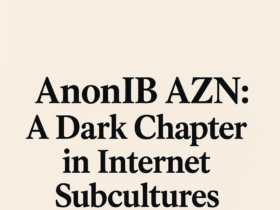Andy WarHella: Exploring the Dark Side of Pop Art

Andy WarHella is an avant-garde artist who reimagines the bright and commercial world of pop art through a darker, more provocative lens. Drawing inspiration from the iconic works of Andy Warhol, WarHella adds elements of dystopia, horror, and societal critique, creating art that challenges the viewer’s perception of modern culture. This approach not only subverts the traditional expectations of pop art but also invites deeper reflections on the impact of mass media, consumerism, and the darker aspects of human nature.
The Origins of Andy WarHella
The Influence of Andy Warhol
Andy WarHella’s work is deeply rooted in the legacy of Andy Warhol, one of the most influential figures in the pop art movement. Warhol’s exploration of consumer culture, fame, and the superficiality of modern society laid the groundwork for WarHella’s artistic endeavors. However, where Warhol’s work often celebrated these themes with bright colors and repetition, WarHella takes a different path, choosing to critique and deconstruct them.
The Birth of a Darker Vision
WarHella’s journey into the art world began with a fascination for the macabre and a desire to expose the darker side of the human experience. This led to the creation of pieces that combine familiar pop art motifs with unsettling imagery, often drawing from horror films, dystopian literature, and real-world events. This unique blend of influences gives WarHella’s work a distinct voice that stands out in the contemporary art scene.
Themes in Andy WarHella’s Work
Dystopia and Consumerism
One of the recurring themes in WarHella’s art is the dystopian nature of consumerism. While Warhol’s art often glamorized consumer products and celebrity culture, WarHella’s work reveals the hollow and sometimes destructive aspects of these obsessions. The artist frequently uses distorted images of everyday objects, such as soup cans and advertisements, to highlight the emptiness of a consumer-driven society.
The Horror of Fame
Fame, another central theme in pop art, is also reinterpreted by WarHella. Instead of celebrating celebrity culture, WarHella explores its dark side—the loss of identity, the invasion of privacy, and the ultimate cost of fame. Through grotesque and surreal depictions of famous figures, WarHella’s art serves as a cautionary tale about the perils of seeking the limelight.
Society’s Underbelly
WarHella’s work often delves into the darker aspects of society that are usually glossed over in mainstream media. Themes such as mental illness, addiction, and societal decay are prevalent in the artist’s portfolio. By juxtaposing these heavy themes with the bright, superficial style of pop art, WarHella creates a powerful contrast that forces viewers to confront uncomfortable truths.
The Impact of Andy WarHella’s Art
A New Direction for Pop Art
Andy WarHella’s reinterpretation of pop art has sparked discussions about the role of art in reflecting and challenging societal norms. By turning the traditionally bright and commercial art form on its head, WarHella has opened up new avenues for artistic expression within the genre. This darker approach has influenced other artists and led to a broader acceptance of critical and provocative themes in contemporary pop art.
The Role of the Viewer
WarHella’s art is not just about creating visually striking pieces; it’s about engaging the viewer in a dialogue. The unsettling nature of the work demands that viewers confront their own complicity in the culture being critiqued. Whether it’s through shock, discomfort, or introspection, WarHella’s art leaves a lasting impression that goes beyond the initial visual impact.
FAQs about Andy WarHella
1. What is the main difference between Andy WarHella and Andy Warhol?
While Andy Warhol’s work often celebrated consumer culture and fame, Andy WarHella critiques these themes by exposing their darker, more disturbing aspects. WarHella’s art combines pop art aesthetics with elements of horror and dystopia.
2. What are some common themes in Andy WarHella’s work?
Common themes include dystopia, the dark side of consumerism, the horrors of fame, and the underbelly of society. WarHella’s work often features grotesque and surreal imagery to convey these themes.
3. How has Andy WarHella influenced contemporary pop art?
Andy WarHella has influenced contemporary pop art by introducing critical and provocative themes into the genre. This has led to a broader acceptance of darker subject matter in pop art and inspired other artists to explore similar themes.
4. Where can I see Andy WarHella’s work?
Andy WarHella’s work can be seen in various online galleries, exhibitions, and art shows. The artist also has a strong presence on social media, where new pieces and projects are regularly shared.
5. Is Andy WarHella’s work considered controversial?
Yes, Andy WarHella’s work is often considered controversial due to its dark and provocative themes. However, this controversy is also what makes the work impactful, as it challenges viewers to think critically about the subjects being depicted.
6. What inspires Andy WarHella’s art?
Andy WarHella draws inspiration from a variety of sources, including horror films, dystopian literature, real-world events, and the legacy of Andy Warhol. This eclectic mix of influences helps to create the unique, unsettling style that characterizes WarHella’s work.
Andy WarHella is a bold and innovative artist who pushes the boundaries of pop art by infusing it with dark, thought-provoking themes. Through a unique blend of horror, dystopia, and societal critique, WarHella’s work challenges viewers to see beyond the surface of popular culture and reflect on the deeper implications of the world we live in.















Leave a Reply